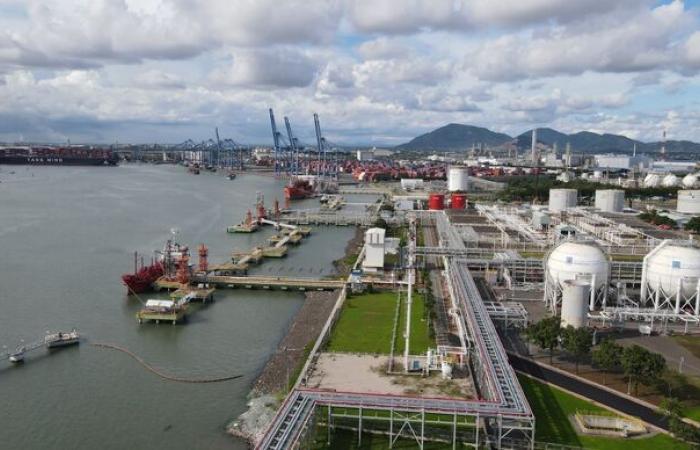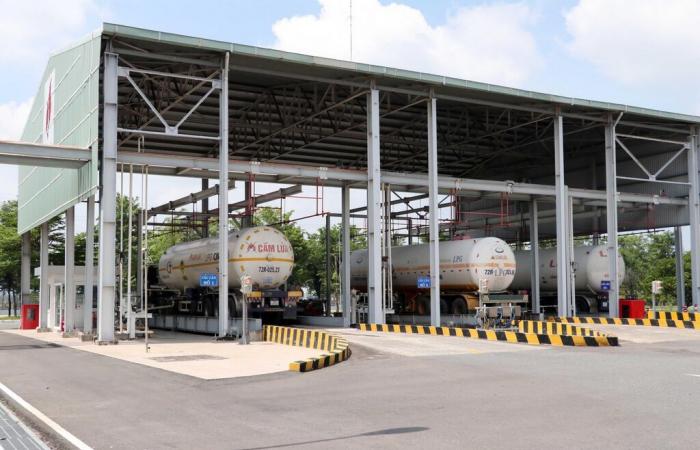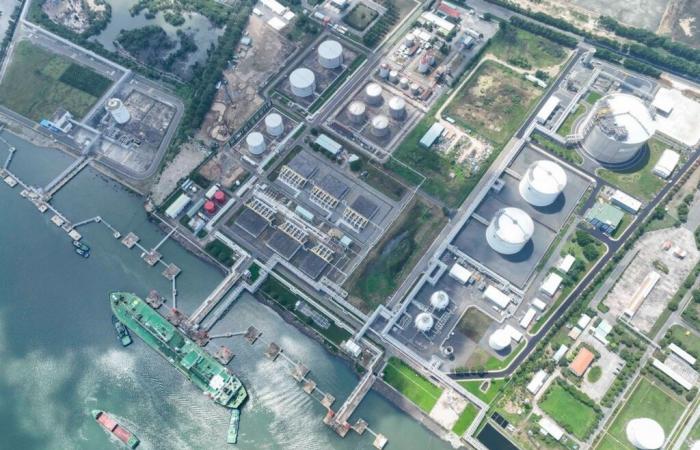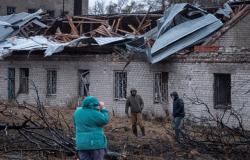>> Develop electricity using liquefied natural gas
>> The Russian group Novatek is interested in LNG projects in Vietnam
>> Liquefied natural gas: foreign investors target infrastructure
Vietnam’s economic growth depends on strategic investments in gas infrastructure and liquefied natural gas (LNG) contracts as well as crucial policy reforms, as national gas demand is expected to increase by an average of 12% per year and could triple by the mid-2030s, according to a study by energy research and consultancy firm Wood Mackenzie.
| The liquefied natural gas (LNG) storage and port terminal in Thi Vai (chief town of Phu My) which has just started operating is considered an engine of economic development for the province of Bà Ria-Vung Tàu. |
| Photo : VNA/CVN |
Gas consumption will continue to grow due to increasingly high energy demand, from 8 million tonnes of oil equivalent (Mtoe) in 2020 to 20 Mtoe in 2035. During this transition, the share of coal in the consumption will decrease by 7 Mtoe by 2050.
Joshua Ngu, vice president for Asia Pacific at Wood Mackenzie, said the power sector will continue to dominate gas consumption, with forecasts for the fuel to account for up to 14% of total generation. electricity in 2030. “Gas-fired power generation is becoming increasingly essential to avoid a possible power shortage in the near future.”
As coal-fired power generation stagnates in the coming period and renewables continue to face challenges such as intermittent performance or grid constraints, gas and LNG will be sources of energy crucial to ensuring national energy security and supporting sustainable economic growth.
Gas production in Vietnam
Besides the expected increase in gas demand, Vietnam faces several challenges in domestic production. Current fields, mainly located in the South-East region, are maturing, leading to a 25% reduction in national gas supply over the past five years.
However, with recent development projects such as the Investment Decision (IDF) for Block B in the Malay Basin, gas production is expected to increase by 0.4 billion cubic feet (or approximately 11.3 million cubic feet). cubic meters) per day by 2030. Furthermore, the construction of a gas pipeline from the shared production block of Tuna (Indonesia) in the Natuna Sea should make it possible to transport gas to Vietnam from the 2030s.
Risk of price volatility on the national market
| Tanker trucks transporting liquefied gas to the PV GAS terminal in Vung Tàu. |
| Photo : VNA/CVN |
The Wood Mackenzie study indicates that Vietnam is fully exposed to the spot LNG market, having entered into no long-term purchase contracts. Additionally, differences between the cost of LNG-generated electricity, power purchase agreements, and the lack of progress on LNG-powered electricity generation projects have become notable obstacles to conclusion of contracts for LNG in Vietnam.
The development of new gas infrastructure will reduce concerns related to gas shortages. The main gas pipeline network in Vietnam is currently concentrated in the South. Two LNG storage terminals have been built in the south, with the Thi Vai terminal already in operation and the Hai Linh terminal planned for September 2024. Several other LNG terminals are in the feasibility study phase and could be operational as soon as the beginning of the 2030s.
“The May 2023 approval by the Vietnamese government of the Action Plan for Electricity Master Plan VIII highlights the importance of LNG-based power generation projects, aiming to add 22.4 GW of generation capacity of electricity to LNG by 2030” said Ms Yulin Li, gas and LNG expert at Wood Mackenzie.
However, for Vietnam to fully exploit the potential of gas and LNG, a specialized energy framework is needed to focus on energy policies and regulations. “A strong policy framework is essential to attract investment in the development of downstream and mid-chain gas infrastructure,” insisted M.me Li.
 |
| The construction area of liquefied natural gas (LNG) tanks in Thi Vai, Bà Ria – Vung Tàu, is under the investment of the Vietnam General Gas Company (PV Gas). |
| Photo : VNA/CVN |
According to Wood Mackenzie’s analysis, Vietnam should strengthen its partnerships with suppliers capable of meeting national requirements. Currently, several reputable suppliers are active in Vietnam, including Petronas.
As one of the world’s largest integrated LNG producers, Petronas produces more than 36 million tonnes of LNG per year at its facilities in Bintulu, Australia, Egypt, and soon in Canada. This extensive network strengthens Petronas’ reputation for supplying LNG to Vietnam.
Initially an energy supplier to the Malaysian domestic market, Petronas has expanded its supply to key Asian economies such as Japan, China and the Republic of Korea. This expansion highlights Petronas’ expertise and in-depth knowledge of the factors and trends influencing the functioning of markets in Asia, as well as its ability to offer tailor-made and flexible solutions tailored to the terms of each contract.
With a vision of a greener future, Petronas produces LNG responsibly, adopting and improving emissions reduction technologies. Measures such as electrification, fugitive emissions prevention and flaring, as well as carbon capture and storage (CCS) technologies, are crucial efforts in this process.
Wood Mackenzie is a global company providing information on renewable energy, energy and natural resources.
Dieu Linh/CVN








